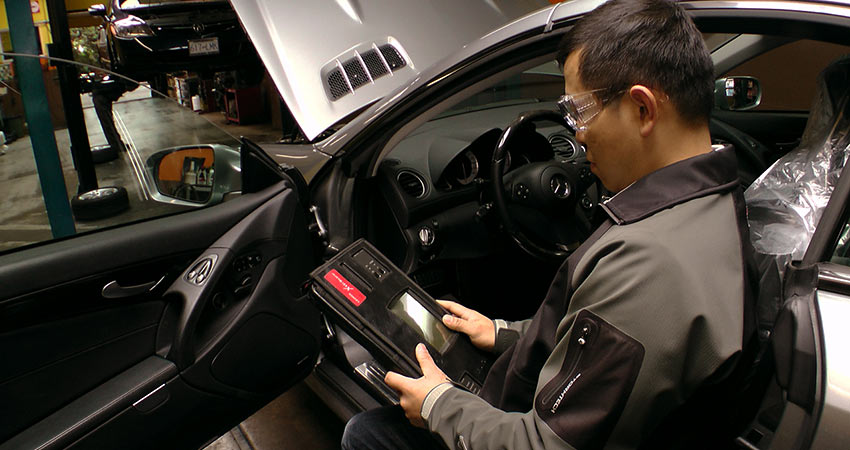Keeping Your Car In Tune
 Whether you’re doing the auto tune-up yourself or having your tune-up done professionally, it’s wise to know what’s involved.Periodic checking, inspection and maintenance of ignition, carburetion and emission components help ensure efficient engine performance. Let’s make the rounds with Car-Care Sam as he points out 16 components that should get attention as part of a tune-up:
Whether you’re doing the auto tune-up yourself or having your tune-up done professionally, it’s wise to know what’s involved.Periodic checking, inspection and maintenance of ignition, carburetion and emission components help ensure efficient engine performance. Let’s make the rounds with Car-Care Sam as he points out 16 components that should get attention as part of a tune-up:- Inspect the distributor cap for cracks and for erosion of the terminals. Cap and rotor should be replaced if necessary.
- Pitted breaker points and/or worn rubbing block hinder performance and may cause starting trouble. (Not applicable on cars with electronic ignition.)
- Loose or corroded connections at the coil can cause starting trouble. “Weatherpack” seals must always be installed on all appropriate connections to avoid corrosion and rapid failure.
- H.T. wires on distributorless systems often fail earlier than expected. Ignition wires and boots deteriorate with age, causing the spark to short-circuit. Wiring is usually replaced with every second or third tune-up.
- The spark plug firing tip gives clues on engine condition. Look for worn or burned electrodes, sooty or oily deposits when inspecting spark plugs. Plugs should be replaced as part of a tune-up. Look for carbon-tracking on installation; causes rough idle and stalling.
- Incorrect timing can cause “pinging” or poor engine performance. Timing adjustment is an essential part of a tune-up.
- Cars with timing belts: All manufacturers recommend changing the timing belt every 80,000 km. to avoid expensive repairs when they break.
- Even maintenance-free batteries can accumulate corrosion on terminals. Corroded connections cut current flow, causing hard starting and/or prevent the battery from fully charging. Keep the battery terminals and the top surfaces clean and dry to prevent current leakage.
- Rough idling or hard starting may be due to sticking choke mechanism or broken vacuum lines.
- Fuel filters trap dirt before it reaches the carburetor. A clogged filter starves the engine of gas. The fuel filter should be replaced as part of a tune-up. Filters on fuel-injected engines are often under the vehicle. They should be replaced at least yearly, before they plug and damage the in-tank electric fuel pump.
- The air filter is usually replaced as part of the tune-up. If you cannot see light through a used air filter, change it.
- Tune-up should include idle speed adjustment. This may be too complex for the do-it-yourselfer on fuel-injected systems.
- The “stove pipe” preheats air to the carburetor. It should be closed when cold, open when engine warms up. The door may move between open and closed depending on the sensor in the air cleaner housing.
- The PCV valve is another replacement item. When it sticks, engine performance is impaired.
- It is advisable to clean the fuel injection system at least once a year to avoid clogging.
- A first-class tune-up includes a thorough diagnostic check by a qualified technician, including a 4-gas analysis and report to confirm proper engine condition. Many of today’s vehicles are equipped with fuel injection systems in place of carburetors. Servicing is best left to professional technicians.
